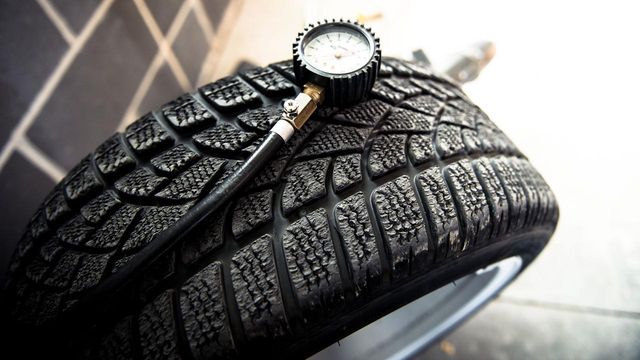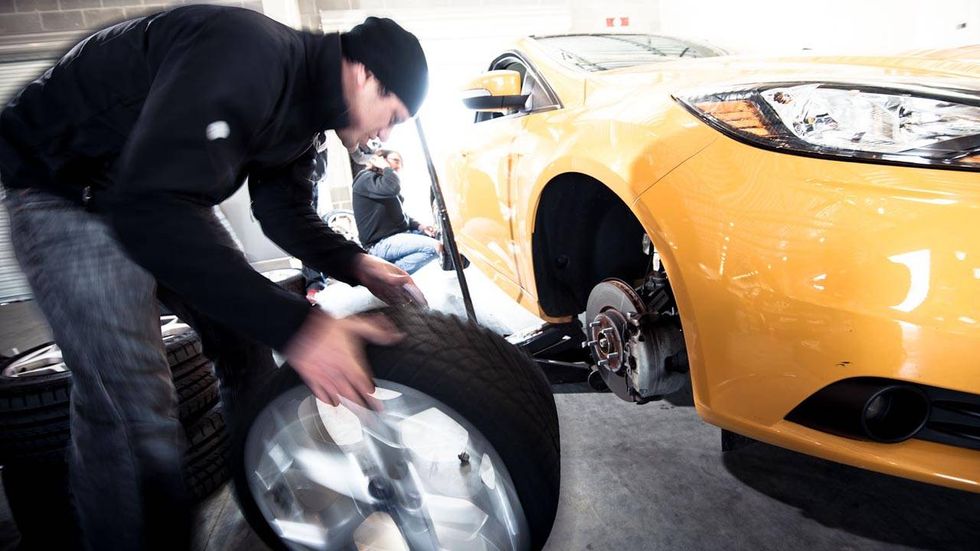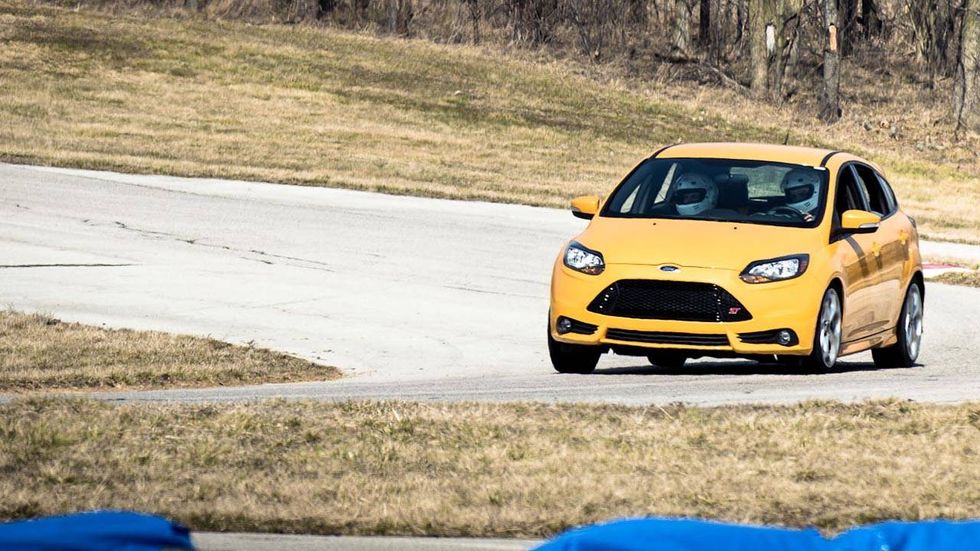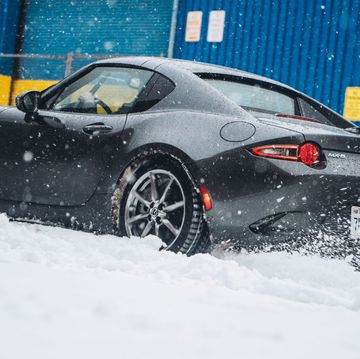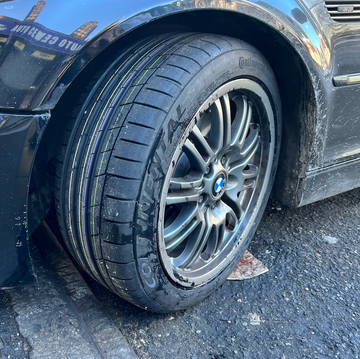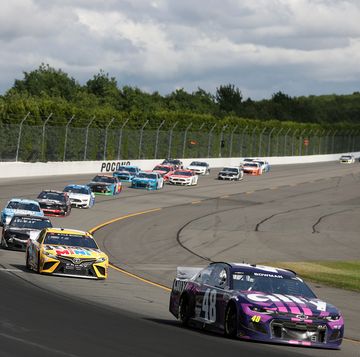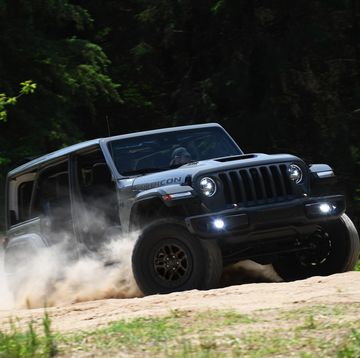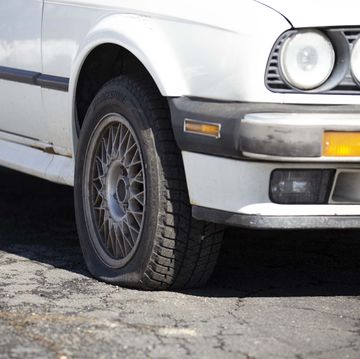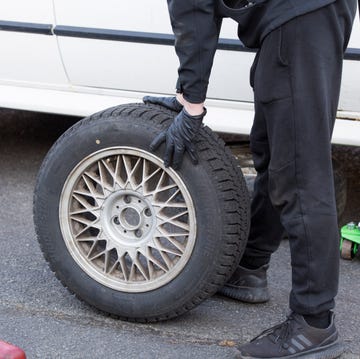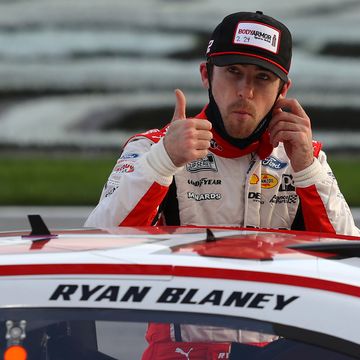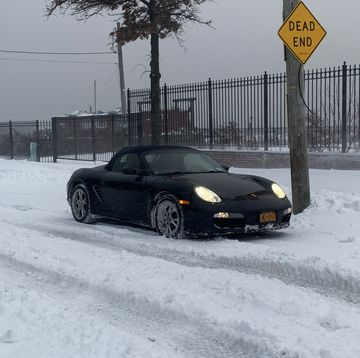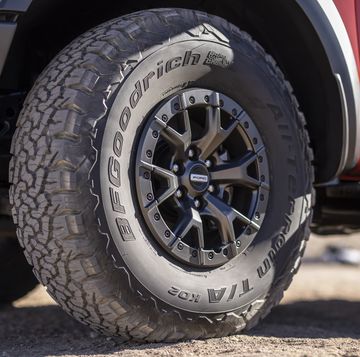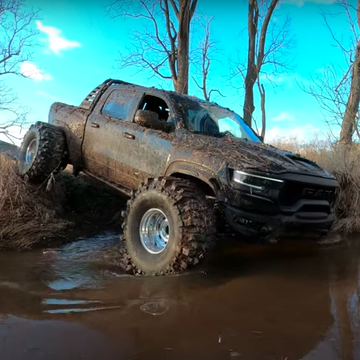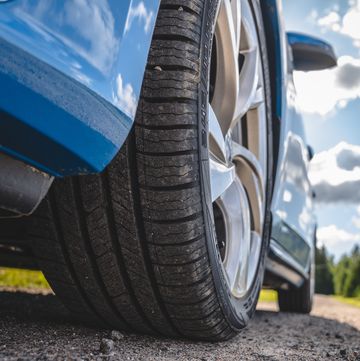This post was originally published 11/26/2014, but we're republishing it today since, well, it's wintertime. Enjoy. -Ed.
Hang out with SCCA autocrossers or road racers long enough and you'll hear the phrase "no-season tires" pop up. They're talking about what the rest of the world calls "all-season tires," but anybody with nontrivial experience on a racetrack or cone course knows that even the newest generation of year-rounders can't cut the mustard at speed, or in the snow. If you're driving a modern performance car and you don't have dedicated summer performance tires strapped to all corners, you're only experiencing a fraction of what it can do.
So-called "max-performance" summer tires are pretty hopeless when the thermometer heads south. That's because tire manufacturers make each one of their products with a specific chemical cocktail designed to perform best in a specific temperature range. Dedicated race rubber needs to be hot enough to burn your skin in order to perform properly, which is why you see racers weaving back and forth, "scrubbing" heat into their tires during safety-car laps. Summer performance tires tend to turn rock-hard and lose grip once the temperature drops below fifty degrees Fahrenheit or so.
For that reason, many drivers make the decision to compromise their car's ultimate performance in the warmer months by fitting a set of no-season tires. They're hoping that the relatively broad-temperature, moderate-grip rubber compounds they use will get them safely through winter. As a result, they struggle every time it snows—but they also then wonder why their Porsche seems strangely short on grip when the summer roads beckon.
The proper solution is to get real winter tires and put them on when the temperature drops. Retailers like the Tire Rack have been selling easy-fit wheel-and-snow-tire packages for decades now. If you have four square feet of open ground in your garage or basement, you can stack a set of extra wheels there. When the time comes, you can swap the wheels off and on in just a few minutes.
It sounds hard to believe, but almost any car with proper winter tires, even a rear-wheel-drive sports coupe, is easier and safer to drive in winter than an all-wheel-drive SUV on all-seasons. With the right tires fitted, you won't just go better. You'll turn and stop better as well. The police know this, which is why you'll rarely see a Crown Vic or Charger with a light bar stuck in the snow.
There are two common myths about winter tires. One is that they're only good on snow or ice. Wrong. Even where the roads are dry, you'll benefit from a rubber compound that's optimized for freezing temps. Thinking of them as "snow tires" just perpetuates the myth. The other is that having them on when there's no snow on the ground will wear them out. No way. We've run dedicated snow tires for months without seeing any snow at all.
To test both of these theories at their illogical extreme, however, we decided to take winter tires to the hottest place they could go: a racetrack.
Our test vehicle was a Ford Focus ST. It's not known for being gentle on tires—not with the cranked-up Ecoboost delivering all its thrust through the two front wheels. We took it to Putnam Park Raceway outside Indianapolis and ran it against the clock. First, we tried it with the standard-equipment Goodyear Eagle F1 Asymmetric. The Eagle is the very model of a modern max-performance summer tire, remaining consistent and predictable even as the heat built up over multiple laps.
Once we were satisfied we knew what to expect from the Focus, we brought it back to the pits and swapped in a set of Dunlop Wintersports on an identical set of factory Ford wheels. As you'd expect, they didn't have the ultimate grip of the Eagles. Not even close. And they were more sensitive to being run over multiple laps, which makes sense since they were designed to operate at temperatures way below what we were giving them.
Still, the Focus was far from undriveable at speed with the winter tires fitted. When we put the stopwatch on them, we found that by giving them time to cool in the lap before we could consistently run within two and a half seconds of the summer-tire time. The best winter-tire lap was just 2.2 seconds south of the Eagles. In a race, that kind of time is the difference between worst and first. But don't forget that the winter tires put up lap times comparable to most brands of all-season tires.
Most importantly, at the end of a hard session of high-speed lapping, the Wintersports didn't exhibit any measurable or visible wear at all. That settled it for us: there's no reason to slide through winter on second-rate tread. Get yourself another set of wheels and enjoy your car all year the way it was meant to be enjoyed—and if you find yourself stopping by a racetrack in the middle of winter, at least you'll be equipped for the task!
Jack Baruth is a writer and competitor who has earned podiums in more than fifteen different classes and sanctions of automotive and cycling competition, in both amateur and professional capacities, as well as an enthusiastic hobbyist musician and audiophile who owns hundreds of musical instruments and audio systems. His work has appeared in Bicycling, Cycle World, Road & Track, WIRED, Wheels Weekly, EVO Malaysia, Esquire, and many other publications. His original design for a guitar, the Melody Burner, has been played by Billy Gibbons, Sheryl Crow, and others.
